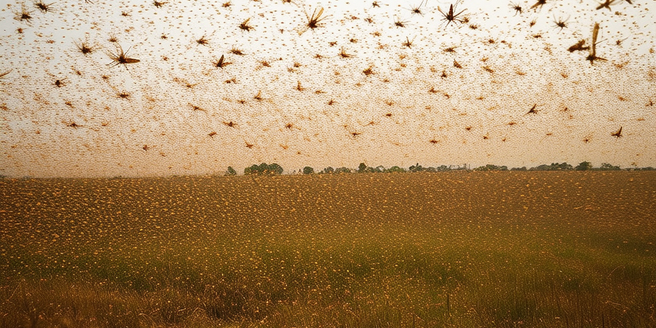
The Impact of Temperature on Insect Behavior
Insects are ectothermic, meaning their body temperature and metabolic processes are influenced by external temperatures. As temperatures rise, their activity increases, leading to behavioral changes. These can include seeking out cooler microhabitats or altering feeding habits. For example, elevated temperatures can accelerate the metabolic rate, resulting in increased foraging and mating activity. It is important for scientists to monitor and study these shifts to better inform ecological management strategies. Warmer conditions may also expand the geographical range of certain insect species, enabling them to colonize new areas. Such behavioral adaptations are crucial for survival but can also have significant environmental impacts, such as altered pollination patterns and increased pest pressure on agriculture. Understanding these changes is vital for predicting the ecological roles insects play under shifting climates.
How Heatwaves Alter Insect Lifecycles
Heatwaves can drastically alter the lifecycles of insects by accelerating developmental stages. In warmer conditions, eggs may hatch sooner, and larvae develop more quickly into adults. This rapid progression can lead to more generations of insects within a single season, increasing population sizes dramatically. This increase can have cascading effects on local ecosystems, as food sources and habitats become strained. For some species, such as mosquitoes, this could mean a higher incidence of vector-borne diseases as more insects are around to transfer pathogens to humans and animals. Conversely, extreme heat may also increase mortality rates if temperatures exceed an insect’s tolerance levels. The balance between accelerated lifecycle progression and heat-induced mortality can significantly influence population dynamics and ecosystem balance.
Increased Insect Activity in Urban Areas
Urban areas often exhibit higher temperatures than rural surroundings due to the heat island effect, making them hotspots for increased insect activity. As these areas experience rising temperatures, insects like mosquitoes, ants, and cockroaches become more active, seeking food and mates. The changing climate further exacerbates these conditions, contributing to the spread of insects to new regions. The abundance of artificial light sources in cities can also attract various nocturnal insects. This uptick in activity can elevate the presence of insects that are considered pests, leading to increased encounters with humans and potential public health concerns. Additionally, urban gardens and parks serve as crucial habitats, promoting biodiversity amidst the concrete landscape. Managing insect activity involves monitoring these populations and adopting integrated pest management strategies.
Consequences for Ecosystems During Heatwaves
Heatwaves impose considerable stress on ecosystems, altering insect interactions with plants, other animals, and their environment. Temperature-sensitive relationships like plant-pollinator dynamics are especially vulnerable; some plants may flower earlier, mismatching with the availability of their pollinator insects. This timing disruption could impact food production and biodiversity. The cascading effects of these changes may lead to long-term ecological imbalances. Certain insects may outcompete others, leading to shifts in community composition, while predators might find it challenging to locate prey due to altered behaviors. Moreover, increased pest insect activities during heatwaves can affect forest health and agricultural productivity, requiring adjustments in pest control practices. Ecosystem resilience is tested as organisms adapt or succumb to extreme heat variations.
Adapting to Changes in Insect Populations
Adapting to fluctuating insect populations during heatwaves demands a multi-faceted approach involving ecological monitoring and proactive management strategies. Understanding these population changes is crucial for mitigating adverse impacts on agriculture and human health. Farmers can adopt practices such as crop rotation and resistant crop varieties to minimize pest damage. In addition, collaboration between scientists, policymakers, and local communities is essential to develop comprehensive strategies. In urban areas, reducing heat islands through green spaces and reflective materials helps manage pest populations. Community education on preventing disease spread from insects like mosquitoes is vital. Research into biological control agents and flexible pest management strategies offers sustainable solutions. Society needs to embrace adaptive measures to address shifting insect-microbial-plant interactions and preserve ecosystem services.
